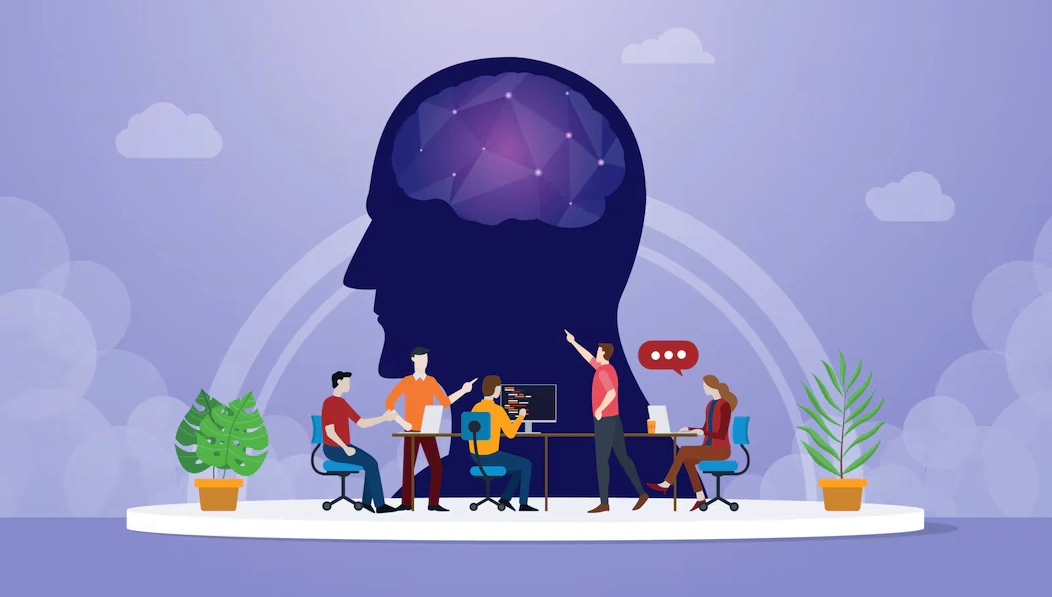The Science of Sharing
What makes us hit “share” on a post, video or meme? It’s not luck it’s psychology. Viral content isn’t random, it’s a carefully crafted mix of emotion, identity and our innate desire to connect. Whether it’s a funny cat video or a powerful social justice message, content spreads because it taps into something deeply human. Let’s explore why we share and how understanding this can help create content that resonates.

The Core Psychological Drivers of Virality
Emotional Triggers, Why Feelings Fuel Sharing
Our brains are wired to react to emotions. Content that sparks strong feelings whether joy, awe, anger or fear gets shared more often. For example, a heartwarming story about a rescued animal might make us tear up, while a post about injustice might fire us up. These high-energy emotions push us to act, and sharing becomes a way to release that emotional charge. Ever noticed how relatable struggles or triumphs go viral? That’s the “empathy effect” at work we share what mirrors our own experiences.
Social Identity & Belonging
What we share says a lot about who we are. Memes, political posts or niche jokes act like badges, signaling our values and interests to others. When we share content that aligns with our “tribe,” it strengthens our sense of belonging. Think of fitness enthusiasts posting workout videos or eco-conscious folks sharing climate articles. FOMO (fear of missing out) also plays a role no one wants to feel left out of a trending conversation.
Cognitive Biases That Trick Our Brains
Our brains love shortcuts and viral content exploits these. The novelty bias makes us click on surprising headlines (“Wait, a dog that can skateboard?!”). Confirmation bias drives us to share posts that match our beliefs (e.g., “See? I knew climate change was real!”). And the bandwagon effect kicks in when everyone’s sharing something we join in to feel part of the crowd.
The Anatomy of Viral Content
Storytelling That Sticks
Stories stick because they’re relatable. A strong narrative like a hero overcoming odds or a conflict with a satisfying resolution keeps us hooked. Think of ads that show “real people” solving everyday problems. When we think, This could happen to me, we’re more likely to share it.
Visual and Auditory Hacks
Colors and sounds matter. Bright reds or yellows grab attention (ever notice “SALE” signs?), while calming blues build trust. Catchy jingles or TikTok sounds get stuck in our heads, making us replay and share the content.
The Shareability Formula
Keep it simple: Bite-sized tips or quick laughs spread faster than long essays. But don’t underestimate “practical value.” A life hack (“How to fold a fitted sheet”) or a useful infographic gets shared because people think, My friends need this!
The Role of Platforms, How Algorithms Exploit Human Behavior
Social media platforms are designed to keep us scrolling and sharing. Algorithms prioritize posts that trigger reactions (likes, comments, shares). Each platform plays on different instincts:
- Instagram rewards aesthetic posts that make us aspire to a “perfect” life.
- TikTok feeds our craving for endless novelty with short, addictive clips.
- Twitter thrives on debate, where sharing a hot take can feel like winning an argument.
Ethical Considerations, The Dark Side of Virality
Virality isn’t always positive. Clickbait (“You won’t believe what happens next!”) manipulates curiosity, while misinformation spreads fear. Echo chambers form when we only share ideas that confirm our biases, dividing communities. Brands face a choice, chase clicks at any cost or prioritize authenticity.
How to Create Human-Centric Viral Content
Step 1: Know Your Audience’s Inner World
Use surveys or social listening to learn what your audience cares about. Are they parents seeking humor? Activists wanting change? Map their fears, dreams and daily struggles.
Step 2: Leverage Psychological Hacks (Responsibly)
Craft headlines with curiosity gaps (“The Secret to Perfect Coffee Hint: It’s Not the Beans”). Invite participation through polls or challenges (e.g., “Can you beat this dance trend?”).
Step 3: Test, Learn, Adapt
Try A/B testing: Does a heartfelt story outperform a funny meme? Timing matters too posting about cozy recipes in fall or fitness tips in January aligns with cultural moments.
Lessons from Viral Phenomena
- Dove’s Real Beauty Sketches: By highlighting how women underestimate their beauty, Dove tapped into universal insecurities, making millions feel seen.
- Ice Bucket Challenge: This trend mixed social proof (“Everyone’s doing it!”), altruism (donating to ALS research) and FOMO.
- Twitter Thread Dramas: Controversial threads thrive because conflict drives engagement even if it’s just people arguing in the comments.
The Future of Virality
AI-generated content and virtual reality will shape what’s next. Imagine personalized memes created just for you or VR experiences that feel too real not to share. But as tech evolves, human psychology remains the core our need to connect, express and belong won’t fade.
Virality Isn’t Magic It’s Human Nature
Creating viral content isn’t about tricks or luck. It’s about understanding what makes us human: our emotions, our tribes and our shared stories. When content respects these truths, it doesn’t just go viral it matters. So next time you hit “share,” ask yourself: Does this reflect, reward or deepen the human experience? If yes, you’ve cracked the code.
Final Tip: Keep it real. Even in a world of algorithms, authenticity wins hearts and shares.

